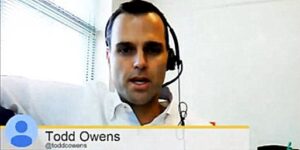
FAQs: Social Media Background Screening
The words “social media background screening” can strike fear into many people’s hearts. As HR professionals, we get it: On the surface, it can all

The words “social media background screening” can strike fear into many people’s hearts. As HR professionals, we get it: On the surface, it can all
“Your Uber driver is named Pete. He’s driving a white Prius and will arrive in 3 minutes.” People aren’t happy about having to slog through
I’m frequently asked why TalentWise offers two seemingly different services—screening and onboarding —as one. What do they have to do with one another? My answer:

We know that mobile tools are rapidly transforming recruitment. But what about the rest of the hiring process? #TChat talks about why employers need to get ahead of the curve

Mobile recruiting is on the rise. What about mobile hiring? The TalentCulture community talks with HR technology experts